Percival P.44 Proctor V
Background
The Proctor was a development of the pre-war Gull. The prototype D.1 Gull (G-ABUR) , a three seat tourer first appeared in 1932. This was followed by the D.2 which was more commonly known as the Gull IV. In 1934 Percival introduced the D.3 Gull Six which featured the DH Gipsy Six engine, improved undercarriage and cabin arrangements (top and doors), but retained the Gull IV folding wing. It was in one of these (G-ADPR) that New Zealand Aviatrix Jean Batten set many of her records. In November 1935 the four seat K.1 Vega Gull was introduced. Powered by the same DH Gipsy Six engine this introduced dual controls and flaps, and was very successful with 90 being produced up till July 1939.
The Proctor was initially a military variant of the Vega Gull with seating reduced to three. It was primarily used for training and communication work by the RAF, FAA, and Air Transport Auxiliary. The Proctor I was a communications model, and the naval version carried a radio operator in the rear. The Proctor II was used by the FAA with the radio operator alongside the pilot. The Proctor III series one was used by the RAF as a three seat communications aircraft , and the series two as a two seat radio trainer. The Proctor IV was a substantial redesign returning to a four seater, involving a longer deeper cabin (and was initially to be renamed the Precepter). The aircraft was utilised as a three seat radio trainer, or four seat communications aircraft. The Proctor V is a civil version of the Proctor IV. Production amounted to 247 Mk.I, 175 Mk.II, 437 Mk.III, 258 MK.IV, and 150 Mk.V. A single Proctor 6 floatplane was produced in 1946 for the Hudson Bay Company.
Post war several hundred military Proctors were released for civilian purchase, and along with the Proctor V were a popular aircraft up until the 1960's. Several aircraft were then lost to the failure of glue joints. As a primarily wooden aircraft utilising casein glues, the costs of maintaining the certificates of airworthiness meant that from that time any aircraft were withdrawn from use.
New Zealand has had seventeen Proctors of various types (eight Mk.I, two Mk.III, and seven Mk.V) on the civil register. They were used in a variety of roles including passenger and freight roles, aeroclub operations, and air ambulance work. Six are reported to have crashed or been scrapped. Five have just faded away. Today that leaves just six (all Proctor V's) which are known to survive. However, two of these are again airworthy, and to my knowledge are the only currently airworthy Proctor Vs in the world.
- ZK-AQZ (c/n Ae143) ex G-AHGN was built at Luton and first flew on October 27, 1948. The aircraft was imported by Ernie Clark, the New Zealand Percival agent, and used as a demonstrator. He retained the aircraft until his death in December 1964. The aircraft then passed through various owners including Airwork (NZ) Ltd, B.R.Cragg, A.J.Robinson, Scotts Engineering Ltd, and P.Dyer. In 1972 the aircraft went to the Golden Age Flying Society (GAFS) at Omaka, near Blenheim. When this ceased its activities in the late 1970's, its assets passed to the Sport and Vintage Aviation Society (SVAS) at Masterton. The aircraft was only displayed in a static condition for some years. However, in 1990 restoration work began supported largely by Lottery Board funding. Many hours and approximately NZ$60,000 later, AQZ made its first official post restoration flight on October 10, 1993 in the hands of John Lanham. Today the aircraft remains at Masterton with the SVAS. (illustrated below).
- ZK-ARP (c/n Ae97) ex G-AIEO was manufactured in October 1946. The aircraft was shipped to New Zealand in June 1948 for the Wairarapa and Ruahine Aero Club having flown a total of 50 minutes. The aircraft went into service in September 1948. In December 1950 the aircraft went to the Wellington Aero Club, where it stayed until April 1957. The aircraft was then stored in Nelson for two years. The aircraft was purchased by Frank Brittain and taken to Palmerston North, where it was rebuilt over a five year period. The aircraft was occassionaly flown by the owner for a number of years. Stored after his death, the aircraft has been restored by Stan and Gilly Smith at North Shore and is now operated by a syndicate. (illustrated below)
The other known survivors are:
- ZK-APH (c/n Ae126) Formerly operated by the Waikato Aero Club as 'Spirit of Waikato'. The aircraft was withdrawn from use at Ardmore in 1967. The registration was cancelled on January 24, 1991. Last reported in storage in Chistchurch. Status unknown.
- ZK-AQJ (c/n Ae50) Last flown in 1972, the registration was cancelled on April 1, 1992. Currently in storage at Auckland.
- ZK-AQK (c/n Ae79) Originally registered Dec 11 1947 this aircraft had various owners including Southern Scenic. It was withdrawn from use at Roxburgh in 1965. It returned to the register on Nov 10, 1977. The aircraft was restored (including the engine) but is not airworthy. The registration was again cancelled on January 24, 1991. Has been displayed at the Ashburton Aviation Museum, but is now with the owner at at Dunsandel.
- ZK-AVW (c/n Ae78) ex G-AGWW Named 'Kiwi Wanderer', this aeroplane was flown to New Zealand by Arthur Bradshaw. The aircraft was last flown at Wanganui in October 1972. The registration was cancelled on January 25, 1991. Currently in storage at Auckland.
Last Text Update:- 21 May, 2001
Last Picture Update:- 2 December, 2002
Technical Data
- Accommodation : 4
- Dimensions
- Span : 12.04m (39'6ft)
- Length : 8.60m (28'2ft)
- Height : 2.20m (7'3ft)
- Weight
- empty : 1,111kg (2,450lb)
- max : 1,588kg (3,500lb)
- Power Plant : 208hp DH Gypsy Queen 2
- Performance :
- max speed : 250km/h (157mph)
- max climb : 680ft/min (207m/min)
- ceiling : 14,000ft (4270m)
- range : 805km (500miles)
Images

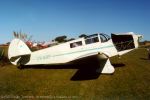
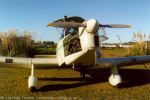
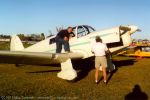
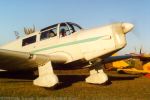
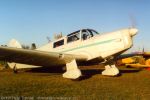
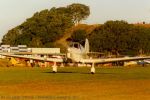

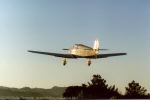
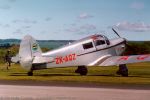
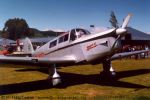
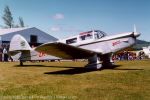
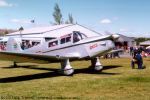
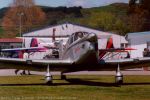

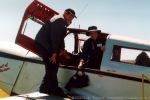
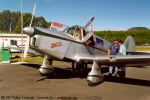
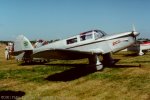
Close Up
Remember to let me know if you have a request for an image of a particular part of the aircraft!
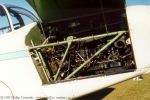
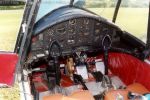
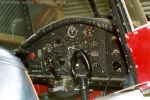
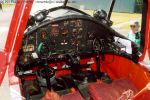
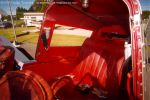


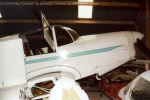

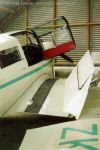
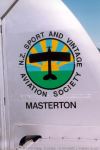
 © 1999-2001 Phillip Treweek, all rights reserved
© 1999-2001 Phillip Treweek, all rights reserved